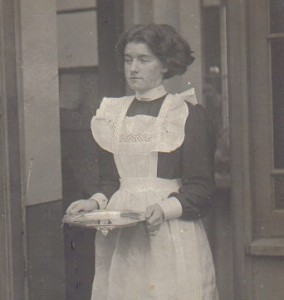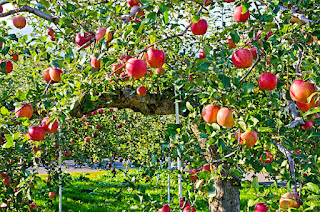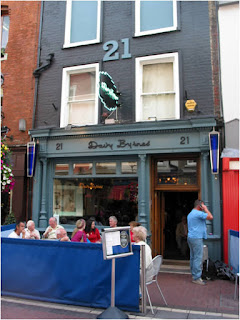Cinderella, Eat Your Heart Out
Life can suck sometimes. The monotony of day to day life has the potential to send any rational human being insane. And it appears as if society is outwardly rebelling against this. For example, in the western world, the selection of careers available to the general public is so vast that the potential to change your lifestyle can be an instant one. A new generation are saying hello to a world of entrepreneurship, waving goodbye to the tedious nature of the life long career, longing for your state pension. But one hundred years ago, this was not the case. People longed for the security that was brought with a stable job. One of the most popular jobs was that of a maid. More than that, it looks as if James Joyce even has a story about one. What can this man not do! In his short story “Clay”, Joyce tells the tale of a maid Maria, who is excited at the prospect of spending Halloween with her former foster child and her family. You must be wondering by now what any of this has to do with a blog about food in literature. I’m getting there, trust me. In the early 20th Century, cooking and preparing food was an essential part of a maid’s job. The methodical and calculated nature of an individual was deemed to be the highest priority of everyone who assumed the role. Maria exemplifies this. From the offset, Joyce brings us to the attention that “the kitchen was spick and span: the cook said you could yourself in the big cooper boilers” (110). His narration goes on to explain to us that “these barmbracks seemed un-cut; but if you went in closer you would see that they have been cut into long thick even slices” (110). We get the image that Maria is very efficient and precise at her job. It also suggests that a significant amount of skill is needed for her role; Joyce’s narrative almost praises Maria for her diligence. Yet there is one more section of this chapter that stands out from the rest. Joyce concludes the paragraph, stating “Maria had cut them herself” (110). Whereas the new cohort of career enthusiasts would take pride in their versatility and an ability to adapt to new career paths, Maria’s pride is founded in the consistent nature of her job. Her ability to, time after time, construct a meal whilst making sure the area it was prepared in was clean provided Maria with the upmost satisfaction. And of course, Maria was not alone in her capabilities. During the Irish Famine, some three millions citizens relocated to the United States and Canada in the hopes of a better life. A large proportion of these migrants were female maids, who quickly gained the reputation for being an integral part of a developing middleclass society. These maids were highly employable, as well as young women wanting to forge a new path for their children through the stability of a job. So, hats off to you Maria. You don’t just represent someone who possess an expertise in food preparation. You represent a generation of women who worked tirelessly to provide for future generations. Cinderella, eat your heart out!
Life can suck sometimes. The monotony of day to day life has the potential to send any rational human being insane. And it appears as if society is outwardly rebelling against this. For example, in the western world, the selection of careers available to the general public is so vast that the potential to change your lifestyle can be an instant one. A new generation are saying hello to a world of entrepreneurship, waving goodbye to the tedious nature of the life long career, longing for your state pension. But one hundred years ago, this was not the case. People longed for the security that was brought with a stable job. One of the most popular jobs was that of a maid. More than that, it looks as if James Joyce even has a story about one. What can this man not do! In his short story “Clay”, Joyce tells the tale of a maid Maria, who is excited at the prospect of spending Halloween with her former foster child and her family. You must be wondering by now what any of this has to do with a blog about food in literature. I’m getting there, trust me. In the early 20th Century, cooking and preparing food was an essential part of a maid’s job. The methodical and calculated nature of an individual was deemed to be the highest priority of everyone who assumed the role. Maria exemplifies this. From the offset, Joyce brings us to the attention that “the kitchen was spick and span: the cook said you could yourself in the big cooper boilers” (110). His narration goes on to explain to us that “these barmbracks seemed un-cut; but if you went in closer you would see that they have been cut into long thick even slices” (110). We get the image that Maria is very efficient and precise at her job. It also suggests that a significant amount of skill is needed for her role; Joyce’s narrative almost praises Maria for her diligence. Yet there is one more section of this chapter that stands out from the rest. Joyce concludes the paragraph, stating “Maria had cut them herself” (110). Whereas the new cohort of career enthusiasts would take pride in their versatility and an ability to adapt to new career paths, Maria’s pride is founded in the consistent nature of her job. Her ability to, time after time, construct a meal whilst making sure the area it was prepared in was clean provided Maria with the upmost satisfaction. And of course, Maria was not alone in her capabilities. During the Irish Famine, some three millions citizens relocated to the United States and Canada in the hopes of a better life. A large proportion of these migrants were female maids, who quickly gained the reputation for being an integral part of a developing middleclass society. These maids were highly employable, as well as young women wanting to forge a new path for their children through the stability of a job. So, hats off to you Maria. You don’t just represent someone who possess an expertise in food preparation. You represent a generation of women who worked tirelessly to provide for future generations. Cinderella, eat your heart out!




Comments
Post a Comment